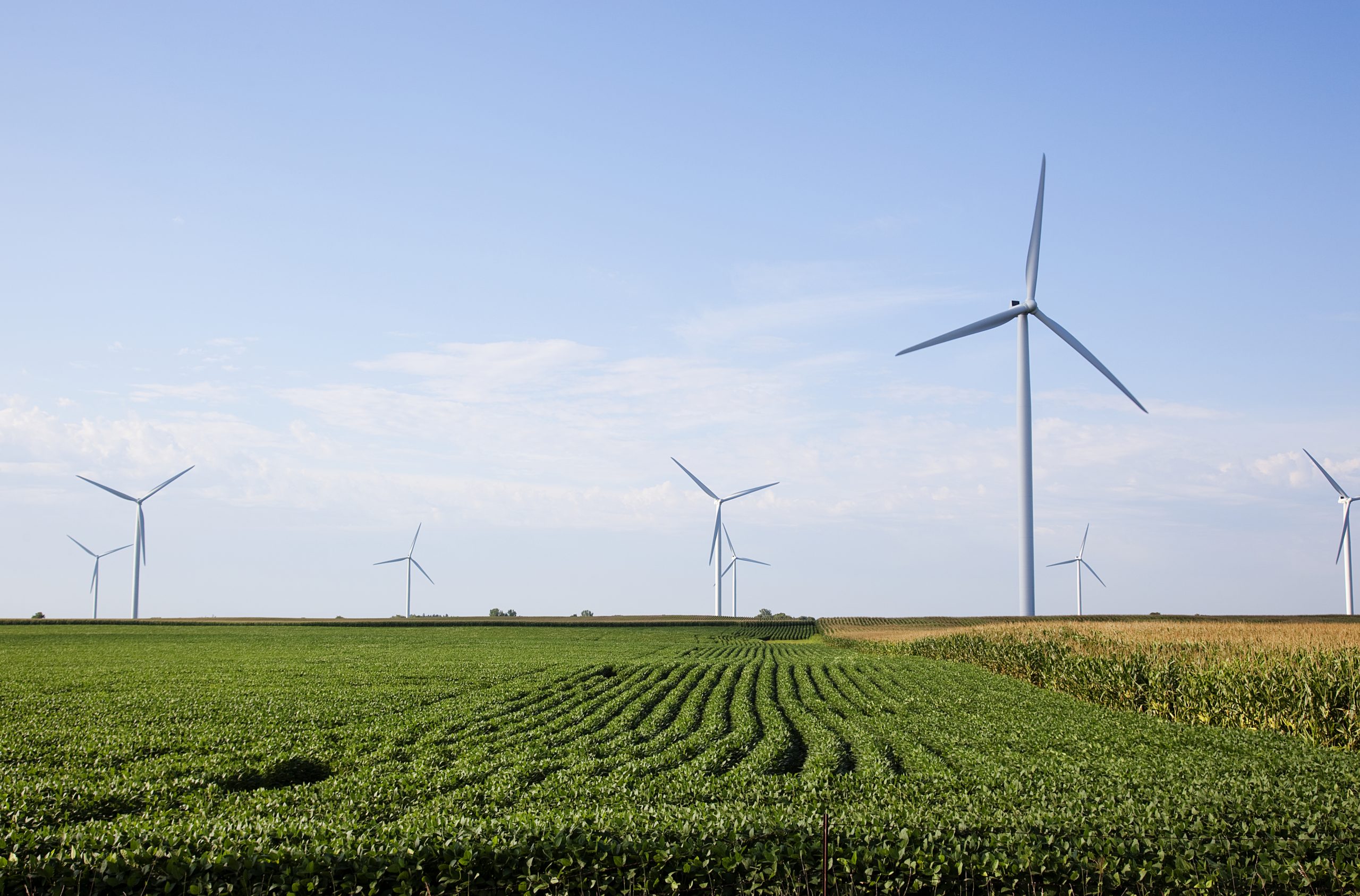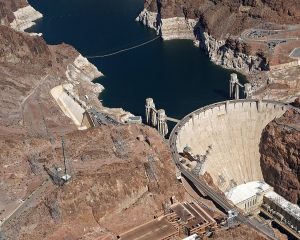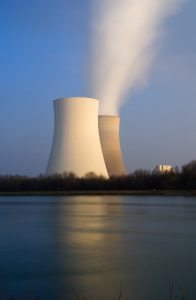5
Kari Pentecost
Introduction
Keywords
Fossil fuels
Carbon dioxide
Renewable energy
Solar power
Solar energy
Wind energy
Hydroelectric power
Nuclear energy
Learning Objectives
- Understand the current limitations in relying on clean energy sources.
- Understand how using clean energy could impact climate change.
- Understand how the different sources of renewable energy work and how they will grow in the next several decades.
- Know how nuclear energy is produced and what keeps it from being the source of the majority of electricity.
The main culprit of climate change is the burning of fossil fuels such as coal and oil which pump carbon dioxide, a greenhouse gas, into the atmosphere. These fuels are necessary to provide electricity to our homes and businesses as well as power our vehicles, planes, and cargo ships. However, by using fossil fuels to meet our energy needs, the byproducts continually flood the atmosphere and worsen the effects of climate change. While there are options for other ways to slow climate change, the most obvious solution is to rely on alternative sources of energy that do not produce as much or any greenhouse gases rather than fossil fuels. In this chapter, we will discuss how energy production impacts climate change, alternative sources of energy to fossil fuels, how energy production will change in the future, and the effect that those changes will have on the environment and climate change.
The Current State of Energy
Key Takeaways
Today, more than 80 percent of energy consumed worldwide is produced by fossil fuelslike coal, oil, and natural gas (Kopp, 2020). A fossil fuel is a fuel that is found in the Earth’s crust and, due to their biological origin, contain carbon and hydrogen which makes them able to be burned for energy (National Geographic, 2019). Since there is a finite amount of these fossil fuels, they are considered non-renewable sources of energy. Additionally, when they are burned their main byproduct is carbon dioxide, and although this gas only accounts for about 0.0407% of the atmosphere’s volume, this percentage has nearly doubled since the start of the Industrial Revolution (Buis, 2019). In order to reduce how much carbon dioxide is emitted into the atmosphere, either less fossil fuels would need to be burned or the byproducts would need to be filtered before entering the atmosphere.
However, decreasing our dependence on fossil fuels is easier said than done. While in recent years developed countries such as those in western Europe have made goals to use less fossil fuels, countries who are heavily reliant on a productive industrial sector such as India and the People’s Republic of China are using fossil fuels at an increasing rate. As countries in Africa, South America, and southeast Asia continue to develop their electricity needs will develop as well, and since fossil fuels are more easily attainable than other sources, developing countries will likely heavily depend on them. As such, the efforts by first-world countries to reduce the amount of fossil fuels burned are overshadowed by the needs of developing countries (International Energy Agency).
Although only depending on renewable energy would be best with respect to climate issues, that may not be a feasible goal for the remainder of the 21st century. Nations are exploring other sources of energy that would make for the least amount of greenhouse gases while also allowing them to maintain their economies.
Renewable Energy
Key Takeaways

There is still much potential for alternative sources of energy. Renewable energy lets us produce energy without the worry of running out of resources or polluting the Earth. While several sources such as wind energy and hydropower have been used for hundreds of years, technology has made these sources more accessible and efficient in the past several decades. Additionally, research in the last century has made us able to harness the energy of the sun effectively.
Solar Power
Solar power takes the energy of the Sun that reaches Earth’s surface and transforms it into electricity. While solar energy refers to the energy produced by the Sun and solar power refers to the solar energy that is transformed into electricity using solar panels, the two terms are frequently used interchangeably. There are several ways to produce electricity from solar energy such as photovoltaics, solar heating & cooling, and concentrating solar power (“About Solar Energy”). Photovoltaics use an electronic process to generate electricity, and can be found in a variety of objects from solar powered calculators to solar panels that provide electricity to homes and businesses. Solar heating & cooling (SHC) technologies use the Sun’s energy to “provide hot water, space heating, cooling, and pool heating for residential, commercial, and industrial applications” (Solar Heating & Cooling). Lastly, concentrating solar power (CSP) systems concentrate the Sun’s energy and use it to run steam turbines or engines, creating electricity (Concentrating Solar Power).
Solar energy is considered renewable since the energy produced by the Sun will be available to us on Earth for about another 5 billion years. After that time, the Sun will transition from a normal star to a red giant, and will expand and heat to the point that Earth will be inhabitable. Since the Sun’s energy is a limitless energy source that will only increase in accessibility with further research and technology development, it will likely become a main electricity source in the coming centuries.
However, what solar energy makes up for in abundance it lacks in raw power. According to Aggarwal on EnergySage, the most efficient solar panels are only 23% efficient, meaning that 77% of solar energy is lost when transforming it to electricity (cite). Solar panels also cannot yet produce the burst of energy needed to run a car or fly a plane. With respect to climate change, this is a drawback since in 2018 the U.S Environmental Protection Agency found that 28% of all greenhouse gas emissions came from the transportation sector of the United States economy (Sources of Greenhouse Gases, 2020).
Though solar power’s potential is currently limited by the available research, technology, and investments, it will grow in the future. In the United States, solar energy currently accounts for 13% of the renewable energy produced, but this is predicted to increase to 49% of renewable energy by 2050 (U.S. Energy Information Administration). Therefore, our increased use of solar energy will help lessen the effects of climate change.
Wind Energy
Wind powered grain mills first originated at least 800 years ago, and that concept has since been developed into wind turbines, which use the energy of wind to produce electricity. Wind turbines have a rotor attached to a tall tower up to 787 feet tall and harness the wind’s energy by using the wind to turn the turbine blades. Wind energy capacity has increased from about 24,000 megawatts in 2001 to 540,000 megawatts in 2017 (Eckley).
Wind energy has also become a competitor to coal-fired generating plants: the largest wind farm in the world, located in China, has more than 7,000 wind turbines and produces more than 6,000 megawatts, while a typical coal-fired plant produces about 550 megawatts of power (Eckley). Not including hydropower, wind energy constitutes for the majority of renewable energy produced in the United States (U.S. Energy Information Administration).
Like any other energy source, wind power faces challenges in becoming a clean, affordable, and accessible source of electricity. One challenge is that when areas with consistently strong winds are not near heavily populated areas, additional resources are needed to provide the electricity from the rural wind farms to urban areas. Another challenge is that, much like when power lines were first installed across the countryside, some feel that wind turbines are unsightly and take away from the beauty of natural landscapes.
Although additional innovation will be necessary to make wind power as efficient as it can be, wind power will likely continue to be a main source of clean energy that minimizes negative impacts on the environment. Despite needing a greater area of land to generate large amounts of electricity, wind turbines have the ability to coexist with farmland which, at least in the U.S. Midwest, has the greatest potential for wind energy.
Hydropower
Like wind energy, hydropower has been used for centuries and currently produces more electricity than any other renewable energy source combined. Hydroelectric dams are most commonly found in Asia and South America. Hydroelectric power is an incredibly efficient source of energy (90% water to wire), meaning that only 10% of energy is lost in converting the energy of the water into electricity. Dams produce electricity by blocking a river or body of water and running a controlled amount of water over a generator (QUEST, 2014).

While hydroelectric power does not produce greenhouse gases, hydroelectric dams can still alter the environment. They can change the water’s temperature and composition, impact freshwater ecosystems, and alter the surrounding land. Dams are also costly to build and sometimes would impact the surrounding area in too great a manner to make building a dam worth it. According to QUEST, in the United States more effort has recently been put into deactivating hydroelectric dams than building new ones (2014). Though there will not be profound growth in hydroelectric power in the next several decades, it will continue to be a stable and clean source of energy worldwide.
Nuclear Energy
Key Takeaways
Nuclear energy is by far the newest and most unfamiliar source of energy in the 21st century. Its origins are traced back to the development of

nuclear weapons in the mid-20th century. Nuclear power is generated by causing nuclear reactions and using the heat that is produced by the reactions to produce electricity, usually by applying that heat to steam turbines (Nuclear Explained).
While nuclear energy is not considered a renewable source of energy since it requires uranium, a non-renewable material, for the nuclear reactions, it still holds potential to impact climate change. Unlike other sources of non-renewable energy, nuclear energy does not rely on fossil fuels or produce carbon dioxide. Plants produce steam and a small amount of radioactive material, which is either contained or recycled into nuclear fuel.
Due to its relationship to nuclear weapons as well as several nuclear accidents in the past 50 years, nuclear energy is commonly viewed as unpredictable and dangerous. The most recent nuclear accident was at the Fukushima Daiichi Power Plant in 2011, after an earthquake caused a tsunami to hit the plant and cool three of the reactors, which caused a meltdown of the reactors (Fukushima Daiichi Accident, 2020). This meltdown made the plant catch on fire and caused the unfortunate death of one plant worker. Because of these accidents, the nuclear energy industry puts great emphasis on safety and precision as a serious nuclear accident could infect surrounding areas with radioactivity.
Nuclear energy’s role in the future of electricity production is uncertain. Though it is an efficient and clean source of energy, the safety concerns, limited supply of uranium, and cost to build nuclear energy plants all limit nuclear power’s growth. In the United States, it is predicted that nuclear energy will produce 12% of total electricity production by 2050, as compared to 19% currently (U.S. Energy Information Administration).
The Future of Energy Production
Key Takeaways
According to current projections, renewable energy will likely be unable to fully replace fossil fuels in the next century. While more renewable energy will be produced, it will not be enough to meet increasing global electricity needs. However, the anticipated increase of renewable energy will certainly reduce the impact of carbon dioxide on the climate. As more research is done on energy production, renewable energy will be made more efficient and less expensive. Also, with a continually increasing use of electric cars, less carbon dioxide will be produced from gasoline and diesel powered vehicles. With a combination of renewable energy and nuclear energy, the effects of climate change could be lessened with the decrease in how much carbon dioxide is produced.
Chapter Summary
Renewable energy has the potential to reduce the effects of climate change since, unlike fossil fuels, renewable sources of energy do not produce greenhouse gases. Solar power, which produces electricity using the Sun’s energy, will see the greatest increase in its share of renewable energy production. Wind energy is the power produced through wind turbines, and the production of wind energy will continue to grow in the coming decades. While hydropower produces the most energy out of any other clean renewable energy source, its potential is limited by environmental and economic factors. Nuclear energy, while not a renewable energy source, still has the potential to reduce the effects of climate change since there are no greenhouse gas byproducts of nuclear energy generation. As further research is done and more technologies are developed, renewable energy and nuclear energy can help reduce the effects of climate change.
Exercises
- What is NOT a method for producing solar power?
- Solar heating & cooling
- Solar reflection systems
- Photovoltaics
- Concentrating solar power
- What is the main substance used for nuclear energy production?
- Strontium
- Uranium
- Hydrogen
- Carbon
- Which statement is false?
- Wind turbines have a tendency to fall and damage the surrounding area
- Nuclear plant disasters can spread radioactive material into the environment
- Hydroelectric dams can damage freshwater ecosystems
- Solar panels are only around 20% efficient
- Short Answer: Why is nuclear energy not considered a renewable energy source?
- Short Answer: Why is it necessary to decrease our use of fossil fuels?
Answers: 1. 2. Solar reflection systems, 2. 2. Uranium, 3. 1. Wind turbines have a tendency to fall and damage the surrounding area, 4. Nuclear energy uses uranium, which is a non-renewable substance, 5. Burning fossil fuels creates carbon dioxide which is a greenhouse gas, and fossil fuels have a limited supply (are not renewable).
References
About Solar Energy. (n.d.). Retrieved November 17, 2020, from https://www.seia.org/initiatives/about-solar-energy
Aggarwal, V. (2020, July 12). Solar Panel Efficiency: What Panels Are Most Efficient?: EnergySage. Retrieved November 24, 2020, from https://news.energysage.com/what-are-the-most-efficient-solar-panels-on-the-market/
Annual Energy Outlook 2020. (2020, January). Retrieved November 24, 2020, from https://www.eia.gov/outlooks/aeo/pdf/AEO2020%20Full%20Report.pdf
Buis, A. (2019, October 9). The Atmosphere: Getting a Handle on Carbon Dioxide. Retrieved November 24, 2020, from https://climate.nasa.gov/news/2915/the-atmosphere-getting-a-handle-on-carbon-dioxide/
Concentrating Solar Power. (n.d.). Retrieved November 24, 2020, from https://www.seia.org/initiatives/concentrating-solar-power
Copp, O. C. (2020, March 28). Fossil fuel. Retrieved November 24, 2020, from https://www.britannica.com/science/fossil-fuel
Eckley Selin, Noelle. Renewable Energy. 30 July 2020, www.britannica.com/science/renewable-energy.
Fukushima Daiichi Accident. (2020, May). Retrieved November 24, 2020, from https://www.world-nuclear.org/information-library/safety-and-security/safety-of-plants/fukushima-daiichi-accident.aspx
How Hydropower Dams Work. (2014, November 14). Retrieved November 24, 2020, from https://www.kqed.org/quest/72528/how-hydropower-dams-work
Hydropower Explained. (2020, March 30). Retrieved November 24, 2020, from https://www.eia.gov/energyexplained/hydropower/
National Geographic Society. (2019, May 31). Fossil Fuels. Retrieved November 24, 2020, from https://www.nationalgeographic.org/encyclopedia/fossil-fuels/
Nuclear explained. (2020, April 17). Retrieved November 24, 2020, from https://www.eia.gov/energyexplained/nuclear/
Photovoltaics. (n.d.). Retrieved November 24, 2020, from https://www.seia.org/initiatives/photovoltaics
Solar Heating & Cooling. (n.d.). Retrieved November 24, 2020, from https://www.seia.org/initiatives/solar-heating-cooling
Sources of Greenhouse Gas Emissions. (2020, September 09). Retrieved November 24, 2020, from https://www.epa.gov/ghgemissions/sources-greenhouse-gas-emissions
